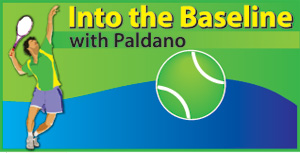New-Gen talent; calculating competitor
View(s):The WTA and ATP global professional set up has done well this year too in presenting tennis to the global audience and delivering good cheque to the deserving talents. Their yearend New-Gen final this year will be in Jeddah, Saudi Arabia in December. An unprecedented format and approach when introduced faced reasonable uproar.
Open tennis prize money is in millions. The idea behind New-Gen tennis is to create a platform for transition from junior platform to that of Open Era ranking.
So far, it proved to be beyond good; that is excellent. Carlos Alcaraz and Jannik Sinner were New-Gen talents. So are good few in the Top 10, their income as New-Gen players they are able to select development team of their choice.
 In the daily life practice of their profession, which is participating in the ATP tournament calendar, the New-Gen mingle with the professionals, preparing themselves to be calculating competitors. The idea to select New-Gen players from open field is harsh on the juniors of most countries. On the other hand, the process is abbreviating the maturity of deserving. A process as any other in the professional open field.
In the daily life practice of their profession, which is participating in the ATP tournament calendar, the New-Gen mingle with the professionals, preparing themselves to be calculating competitors. The idea to select New-Gen players from open field is harsh on the juniors of most countries. On the other hand, the process is abbreviating the maturity of deserving. A process as any other in the professional open field.
For selection into New-Gen, a player must be under 20 years of age at the date of the staging of the event. Other requirements are their performance in the junior events, especially in Grand Slam junior events. So green fingers they are not, but up and coming calculating talent. There is hint that they need have an amazing encounter with Top 20 of the ATP ranking for selection– not confirmed.
Not a nursery but responsibility
Their selection into New-Gen places responsibilities on them. One such is to make tennis attractive during their dominance from then on – an image of attractive calculating competitors. During the period its existence New-Gen programme, though relatively new has delivered the desired results. Many of the past participants are the leading players of the game of tennis.
ATP did not want to create a ‘nursery’ to fill their aging players. That responsibility not profitable to players and unattractive to spectatorship. New-Gen is an excellent integrated apprenticeship to ‘replace’ aging elites in the ATP mechanisms.
New-Gen requirements
Players will have to be under 20 years of age to play in the New-Gen versions, apart from that their position in the Open ATP ranking matters. They should show potential to rise up in the ATP ranking. Many of the former New-Gen are mega players of today. Prominent are Carlos Alcaraz, Alex de Minaure, Janick Sinner, Alex Zverev, Lorenzo Musetti, Karen Khchanov and Felix Auger AliAssime. A selection of who is who in ATP tennis.
Missing link?
One can ask what does these talented have in common and why those who operate in regional enclosures do not have. Two aspects come to my mind. One is calculating competition strait and the other venture into the open field regardless. It means their learning curve is still open. Hungry stomach and hard bed teaches more than all others in life.
History of winning
Most of the wins in tennis comes from outlasting opponents. Outplaying demands stacks of ability. Outlasting just with three strokes. Service, forehand and backhand. In our part of the world described as ‘consistency’. Had very little impact outside the country.
Not really so, Felicisimo Ampon of Philippines reached Wimbledon semi-finals, Ramanathan Krishnan of India also reached the semi-finals of Wimbledon and of course Nicolas Alvarez of South America beat Rod Laver and Ken Rosewall. Like many, from South American had nothing more stroke-wise but they had calculating minds. Kill the body and the head will fall.
In the art of shot selection and persistence; what one shot cannot do, can be done with a hundred. It is also winning.
All of these makes tennis a highly complex mental game. True, with the sophistication of today’s game and speed formula could vary but not erased. Daniil Medvedev of Russia is still doing it, mostly with calculating mind. He sees the whole match and often loses sets to win the match. Calculating mind!
In tennis player need not win every point to win a match, win every rally to win the match, need not win every set to win a match. Often in tennis winner had won less games than the losers. Strange but true. Placing this into development is the trick if one want to be a world beater. It is the best known to date.
Ivan Lendl invited and played against Pete Sampras at practice. An occurrence Lendl recollected years later. He supposed have said, Sampras impressed me and more so frightened me that day. Lendl was right; it was Sampras who displaced from his No.1 position.
Sampras was a calculating competitor. As Boris Becker said in an interview in Wimbledon, when playing Sampras, if he is serving and playing well, pray for rain, nothing else will save you. Rod Laver, John McEnroe and Pete Sampras, like many of their predecessors, were not mere stroke-makers but matured calculating competitors.
George Paldano, European and Asian competition player; Coach German Tennis Federation; National coach Brunei and Sri Lanka; Davis Cup, Federation Cup coach, coached ATP, WTA and ITF ranked players in Europe and Asia; WhatsApp +94775448880–


